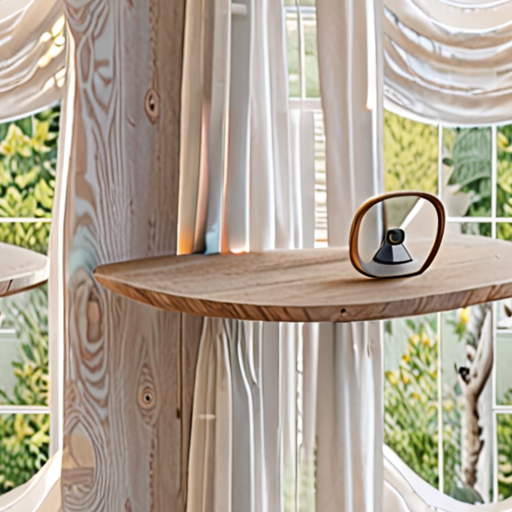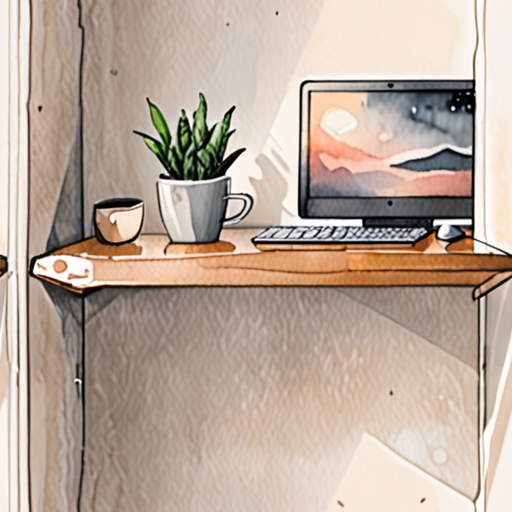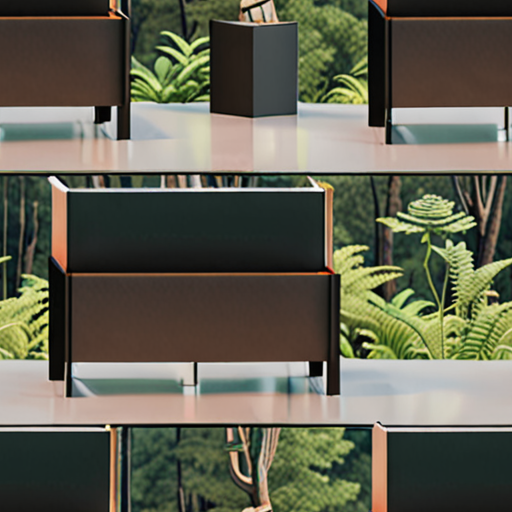Creating a functional and efficient home office can significantly impact your productivity and overall well-being. With the rise of remote work and freelancing, many individuals are turning to their homes as a primary workspace, but often struggle with designing a space that meets their needs. Whether you’re working from home full-time or simply need a dedicated area for focused work, understanding the essential elements of a successful home office is crucial. From choosing the right location to selecting the ideal furniture and decor, there are numerous factors to consider when designing a space that promotes productivity and comfort.

Designing a Perfect Home Office
We’ve all been there – working from home can be challenging, especially when our workspace isn’t optimized for productivity. At Peck and Gartner, we understand the importance of creating a home office that inspires creativity and boosts efficiency.
- Ergonomic Furniture: Invest in a comfortable and adjustable chair, a spacious desk, and a reliable keyboard tray to prevent strain and discomfort.
- Natural Light: Position your workspace near a window to take advantage of natural light, which can boost mood and energy levels.
- Minimal Clutter: Keep your workspace organized and clutter-free by implementing a filing system and storing frequently used items within easy reach.
- Calming Colors: Choose soothing colors for your walls and decor to promote relaxation and reduce stress.
- Soundproofing: Consider investing in sound-absorbing materials or acoustic panels to minimize distractions and create a peaceful environment.
- Technology Integration: Install high-speed internet, a reliable printer, and a state-of-the-art computer to stay connected and productive.
- Storage Solutions: Utilize shelving units, cabinets, and drawers to keep essential supplies and documents within easy reach.
- Personal Touches: Add plants, artwork, or family photos to create a welcoming atmosphere and stimulate creativity.
- Flexibility: Incorporate multi-functional furniture pieces, such as a storage ottoman or a Murphy desk, to maximize space and adapt to changing needs.
- Sustainability: Opt for eco-friendly materials, energy-efficient lighting, and a recycling program to reduce your environmental footprint.
By incorporating these design principles into your home office, you’ll be well on your way to creating a space that fosters productivity, creativity, and overall well-being.
Additional Tips for a Perfect Home Office
Consider the following additional tips to further enhance your home office:
- Invest in a white noise machine or a fan to block out background noise.
- Utilize vertical space by installing shelves or a pegboard to store frequently used items.
- Implement a standing desk or a sit-stand workstation to alternate between sitting and standing throughout the day.
- Choose a color scheme that promotes focus and concentration, such as blue or green.
- Consider adding a small water feature, such as a fountain or a waterfall, to create a calming ambiance.
Final Thoughts
A perfectly designed home office is not just about aesthetics; it’s about creating a space that supports your physical and mental well-being. By prioritizing ergonomics, comfort, and functionality, you’ll be able to work efficiently, stay focused, and enjoy a healthier work-life balance.
Optimizing Your Home Office Workspace
When setting up a home office, choosing the right direction for your desk can greatly impact productivity and overall well-being.
- Consider Natural Light
- Avoid Direct Sunlight
- Minimize Distractions
- Face a Neutral Wall
- Consider Ergonomics
Positioning your desk to face northeast allows for optimal natural light exposure, which can boost mood and energy levels.
However, be mindful of direct sunlight, which can cause glare and discomfort. Consider using window treatments or blinds to control the amount of light entering the room.
Avoid placing your desk near windows or doors that lead outside, as these can be distracting and compromise your focus.
Instead, position your desk to face a neutral wall, allowing you to stay focused on your work without visual distractions.
Remember to set up your workspace ergonomically, with your monitor at eye level, keyboard and mouse within easy reach, and chair height adjusted for comfort.
By considering these factors, you can create a productive and comfortable home office environment that supports your well-being and success.

Designing Your Office Layout
When it comes to designing your office layout, there are several factors to consider to create a productive and comfortable workspace.
-
Assess Your Space
Determine the size and shape of your office, taking into account any architectural features or obstacles that may impact your design.
-
Evaluate Your Needs
Consider the types of activities that will take place in your office, such as meetings, workstations, and storage needs.
-
Create a Floor Plan
Sketch out a basic floor plan to visualize your space and identify potential issues or opportunities for improvement.
-
Choose a Layout Style
Select a layout style that suits your needs, such as an open-concept office, private offices, or a combination of both.
-
Consider Ergonomics
Think about the ergonomics of your office, including seating, lighting, and noise levels, to promote employee comfort and productivity.
-
Integrate Technology
Plan for technology integration, including wiring, outlets, and equipment placement, to support your office operations.
-
Add Decorative Elements
Incorporate decorative elements, such as artwork, plants, and color schemes, to enhance the aesthetic appeal of your office.
-
Finalize Your Design
Refine your design based on feedback from employees and stakeholders, making adjustments as needed to create a functional and inviting workspace.
By considering these factors and incorporating them into your design, you can create an office layout that meets the needs of your team and supports your organization’s goals.

What Should a Home Office Include?
A well-designed home office can boost productivity, comfort, and overall job satisfaction. As someone who works from home, I’ve learned that investing in a dedicated workspace pays off in the long run.
- A sturdy and ergonomic desk
- A comfortable, adjustable chair
- A reliable computer or laptop
- A high-speed internet connection
- Adequate software for remote collaboration, such as Zoom or Skype
- A noise-cancelling headset or speakers for clear communication
- A whiteboard or bulletin board for brainstorming and note-taking
- A bookshelf or storage unit for organization and clutter control
- A plants or artwork to enhance ambiance and mood
In addition to these essentials, consider incorporating features that promote relaxation and stress relief, such as a meditation area or a small reading nook. A well-designed home office should reflect your personal style and needs, making it easier to stay focused and motivated throughout the day.
Creating a Functional Workspace
To maximize productivity, it’s essential to establish a clear boundary between work and personal life. Consider implementing a “workstation” concept, where you dedicate a specific area of your home office to tasks and activities that require intense concentration.
- Designate a specific area for paperwork, filing, and administrative tasks
- Create a separate zone for creative pursuits, such as writing or designing
- Establish a quiet area for phone calls, video conferencing, or meetings
Staying Organized and Focused
A clutter-free and organized workspace is crucial for maintaining focus and reducing distractions. Implement a system for managing paperwork, digital files, and physical supplies, and make sure to regularly clean and declutter your workspace.
- Invest in a paper tray, file organizer, or document scanner
- Utilize cloud storage services for secure and accessible file management
- Implement a task management system, such as Trello or Asana
Enhancing Ambiance and Mood
A well-designed home office should also prioritize ambiance and mood. Incorporate elements that promote relaxation, creativity, and inspiration, such as natural light, calming colors, or soothing sounds.
- Add plants or flowers to purify the air and boost mood
- Incorporate calming colors, such as blue or green, into your decor
- Install a sound machine or nature sounds app to create a peaceful atmosphere
What the IRS Considers a Home Office
The IRS considers a home office to be any area of a taxpayer’s property that is used regularly and exclusively for business purposes.
- A house, apartment, condominium, mobile home, boat, or similar property may qualify as a home office.
- Structures on the property, such as an unattached garage, studio, barn, or greenhouse, may also be considered a home office.
- However, the IRS does not consider any part of a taxpayer’s property used exclusively as a hotel, motel, inn, or similar business to be a home office.
In order to qualify as a home office, the space must be used regularly and exclusively for business purposes.
- The space must be used for business purposes at least 80% of the time.
- The space must be used for business purposes during regular hours of operation.
- The space must be used for business purposes in a manner consistent with its intended use.
Examples of what the IRS considers a home office include:
- A dedicated home office or study.
- A converted garage or attic.
- A spare room or bedroom.
- A outdoor shed or workshop.
It’s worth noting that the IRS has specific requirements for claiming a home office deduction, including:
- The space must be used regularly and exclusively for business purposes.
- The space must be used for business purposes at least 80% of the time.
- The taxpayer must keep records of business use, including photos, logs, and receipts.
By understanding what the IRS considers a home office, taxpayers can take advantage of the home office deduction and reduce their taxable income.

What Size Room Is Needed for a Home Office?
The ideal size for a home office depends on several factors, including the type of work you’ll be doing, the number of people who will be using the space, and the level of comfort and productivity you desire.
- A minimum of 70 square feet is recommended for a small home office, which can accommodate a compact desk, chair, and basic storage.
- A larger home office, measuring around 100-120 square feet, can provide ample space for a comfortable workspace, shelving, and possibly a small meeting area.
- For those who require a lot of space or prefer a more spacious environment, a home office of 150 square feet or more may be necessary.
When determining the optimal size for your home office, consider the following:
- Your workflow and tasks: If you need to handle large projects, meet clients, or have frequent video calls, a larger space may be beneficial.
- Your personal preferences: Think about your comfort level, ergonomic needs, and the types of furniture and decor you want to incorporate.
- Your available budget: Larger spaces often require more investment in furniture, lighting, and technology.
Ultimately, the perfect size for a home office is one that balances functionality, comfort, and aesthetics to support your unique needs and work style.
Key Considerations for Home Office Space Planning
When designing your home office, keep the following factors in mind:
- Ergonomics: Ensure your workspace is set up to promote good posture, reduce eye strain, and minimize distractions.
Conclusion
In conclusion, the ideal size for a home office varies depending on individual needs and preferences. By considering your workflow, personal preferences, and budget, you can determine the perfect size for your home office and create a productive, comfortable, and inspiring workspace that supports your success.

0 Comments